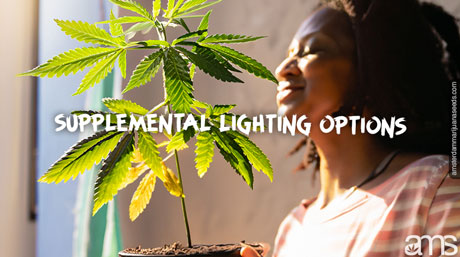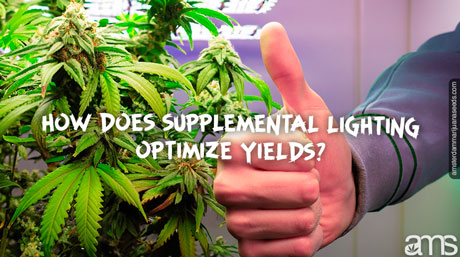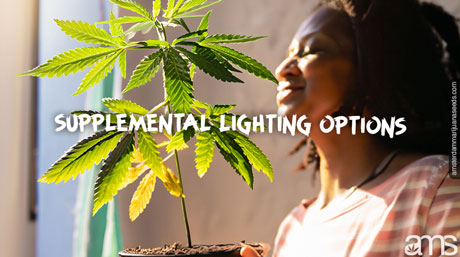If you’re an enthusiast of growing marijuana and are on the lookout to buy cannabis seeds, you might be curious about different ways to enhance plant growth and optimize yields. You’re not alone in this journey. Numerous cultivators worldwide, whether they’re growing cannabis or other plants, are perpetually exploring techniques to enhance the productivity of their green charges. One key factor that plays a significant role in plant growth is lighting. In this comprehensive guide, I will share valuable insights about the importance of supplemental lighting for indoor and outdoor cultivation and its direct impact on nutrient absorption.
While the natural light provided by the sun is usually adequate for plant growth, there can be specific challenges in certain situations. For instance, if you live in an area with shorter daylight hours or a place that lacks sufficient natural light, growing cannabis or other plants can be quite a task. This is where the concept of supplemental lighting comes in.
Supplemental lighting is additional light provided to the plants, supplementing the natural sunlight, thereby ensuring optimal growth and development. Whether you’re growing cannabis indoors or aiming to optimize the outdoor yield, understanding the fundamentals of supplemental lighting can be game-changing.
Let’s delve into the details and uncover how different lighting can affect plant growth and how supplemental lighting can optimize yields, primarily focusing on cannabis growing.

The importance of lighting in the cultivation of plants, including cannabis, cannot be overstated. If you buy cannabis seeds, and plan on growing cannabis indoors, supplemental lighting is indispensable. You might wonder, how does different lighting affect plant growth? Here’s how:
Light is not just a singular entity; it is a spectrum of multiple wavelengths, each having its unique effects on plants. The visible spectrum, spanning from violet to red, is particularly important for photosynthesis, a process integral to plant growth. Blue and red light, in particular, have the most influence on plant development.
Blue light encourages compact, bushy growth, making it ideal for the vegetative stage of cannabis growing. On the other hand, red light stimulates flowering in plants, making it crucial during the blooming stage of growing marijuana.
Now, knowing how different lighting affects plant growth, the next question you might have is – what types of supplemental lighting for indoor and outdoor cultivation are available in the market?
While supplemental lighting for outdoor cultivation may seem unnecessary, growers in regions with limited sunlight can benefit from it. For outdoor growers, portable solar-powered LEDs or HIDs can be great choices.

You’ve bought your cannabis seeds, set up your growing space, and chosen the right supplemental lighting. But how exactly does this additional light translate into optimized yields when growing marijuana?
Supplemental lighting provides a consistent light source that encourages photosynthesis. This process is the backbone of plant growth and development, converting light energy into chemical energy, which fuels the plant’s various functions. When plants receive an adequate and balanced light spectrum, they can perform photosynthesis more efficiently, leading to healthier and more vigorous growth.
Furthermore, using supplemental lighting for indoor cultivation allows for a controlled growing environment. This control over the light intensity, duration, and spectrum can directly influence the size, quality, and yield of your cannabis plants. By adjusting these factors to match the plant’s stage of growth, you can maximize productivity, leading to optimized yields.
Outdoor cannabis growers can also benefit from supplemental lighting. By providing additional light during the early mornings, late evenings, or cloudy days, outdoor plants can enjoy an extended effective photosynthetic period, which can significantly boost growth and yields.

Understanding the correlation between supplemental lighting and nutrient absorption is pivotal for growing cannabis. The energy from light is not only vital for photosynthesis but also plays a significant role in nutrient absorption. Nutrient absorption is an essential process for any plant. It involves the uptake of water, minerals, and nutrients from the soil, which are crucial for the plant’s growth and development.
The effectiveness of nutrient absorption is often determined by several factors, one of which is light. Light drives the process of photosynthesis, which creates the energy required for nutrient uptake. Hence, the more efficient the photosynthesis, the more effective the nutrient absorption.
Supplemental lighting for indoor and outdoor cannabis cultivation enhances the plant’s ability to absorb nutrients effectively. When cannabis plants receive optimal light, they can produce more energy, which in turn boosts nutrient absorption. Consequently, well-nourished cannabis plants are likely to be healthier and yield a more abundant harvest.
To ensure that your cannabis plants are absorbing nutrients effectively, consider the pH level of your growing medium. The pH level significantly affects nutrient absorption in plants. Different nutrients are absorbed best at different pH levels. For instance, nitrogen, a vital nutrient for plant growth, is best absorbed by cannabis plants in a slightly acidic environment (pH 6-7). Hence, it’s essential to maintain the optimal pH for nutrient absorption when growing cannabis.
In conclusion, whether you’re a novice planning to buy cannabis seeds or an experienced grower aiming to optimize your yields, understanding the role of supplemental lighting in plant growth and nutrient absorption is crucial. Remember, supplemental lighting for indoor and outdoor cultivation is not about substituting the sun; rather, it’s about enhancing what the sun provides and ensuring that your plants receive the right quantity and quality of light, irrespective of the environmental conditions. With the correct implementation of supplemental lighting, you can take your cannabis growing experience to a new level and enjoy satisfying yields.
Here’s to a greener future, and happy growing!













Related Posts

One of the most common questions among cannabis users is how long does a weed high last. The duration of a high varies significantly depending on several factors, including the method of consumption, THC potency, dosage, and an individual’s metabolism. While some people prefer a short and manageable high, others enjoy the prolonged effects that certain cannabis products provide.

Today we plan to cover all types of lighting, lighting cycles, and necessities that best suit your strain and cultivar. We want to make sure your plant grows healthy and is ready to harvest in no time!

Enhancing Cannabis Growth and Optimizing Yields through Supplemental Lighting: A Comprehensive Guide
If you’re an enthusiast of growing marijuana seeds and are on the lookout to buy cannabis seeds, you might be curious about different ways to enhance plant growth and optimize yields. You’re not alone in this journey. Numerous cultivators worldwide, whether they’re growing cannabis or other plants, are…